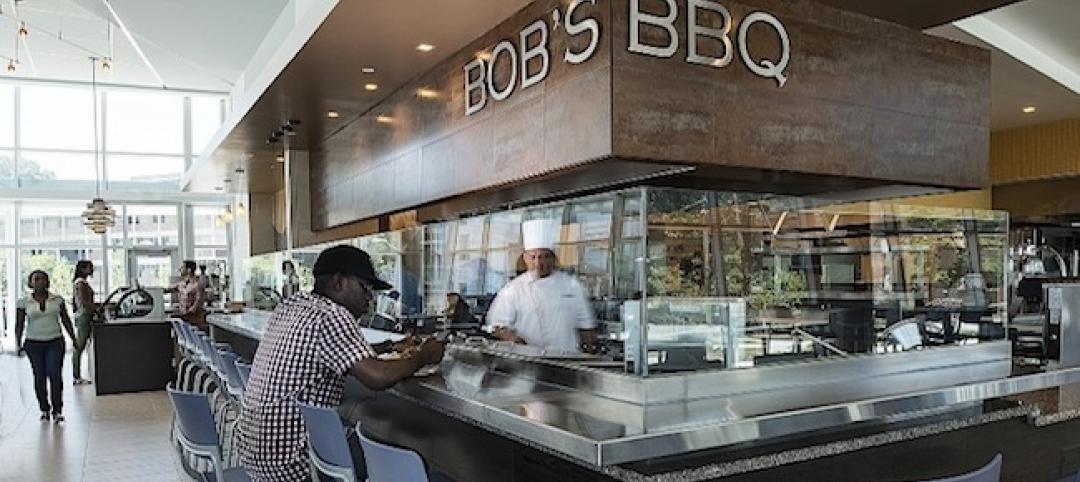Last May, MiTek, a construction software and building services company that’s part of Warren Buffett’s Berkshire Hathaway conglomerate, formed a partnership with Danny Forster & Architecture to promote modular design and construction, a building method that has made inroads into certain sectors (hotels, healthcare, schools, warehouses), but has struggled to attain profitability.
The core of this partnership, known as the Modular Initiative, is its Modular Activation Platform that purports to simplify constructing a modular building by providing everything developers and contractors need to complete the project.
As reported in Fast Company, the joint venture has some advantages over other modular-focused companies, not the least being the financial backing of its parent. Danny Foster & Architecture’s previous design work has included the 168-key AC Nomad Hotel by Marriott in Manhattan, which at 26 stories would be the tallest modular hotel in the U.S. MiTek’s businesses include manufacturing of structural steel, high-rise building facades, and fireproof wallboards.
Since May 2017, when Marriott International unveiled its plans to expand its initiative to drive the adoption of modular construction of hotels in the U.S., industry watchers have been waiting for modular manufacturing for commercial construction to take off. But that trajectory has been less than encouraging, especially after high-profile prefab practitioners Katerra and Skender Manufacturing folded, victims of a pandemic that slowed construction, and, in Katerra’s case, financial and managerial disarray.
And on June 8, the Wall Street Journal reported that the 360-ft-tall AC Nomad Hotel project—which is not using the MiTek approach—had stalled, with its 100 modules made by Skystone Modular in Poland sitting on a dock in Brooklyn, and the project’s owner—the developer 842 Enterprises, controlled by the Chun family—scrambling to raise additional funding to finish the $80 million hotel.
LOGISTICS COSTS STILL A ROAD BUMP
On the other hand, there have been successes for modular in the hospitality arena. The developer citizenM has built several modular hotels in the U.S. In Kings Mountain, N.C., the Catawba Nation this summer is opening a “prelaunch” casino, assembled from prefabricated modules, that will have 500 slot machines and serve as a first stage for the Nation’s Two Kings Casino Resort, which is scheduled to open next year. And Marriott continues to favor modular construction for its urban-centric AC Hotels brand.
“There’s a lot of curiosity around modular construction,” observes Sergio Saenz, Principal and Director of Hospitality for HKS. Mark Pratt, LEO A DALY’s Global Hospitality Practice Leader, says more clients are inquiring about modular construction, and his firm is using modular guest bathroom options in some of its current hotel projects.
But so far, Shawmut Design & Construction and its hotel clients have eschewed modular construction methods. Randy Shelly, the firm’s Executive Vice President of Hospitality, explains that the hotel/resort sector has been slower to adopt modular construction for two reasons: the “significant” cost of transporting modules long distances, and the design limitations of modular production at a time when hotels are seeking ways to differentiate themselves aesthetically.
Shelly did note, however, that as new regional production facilities open, transportation costs could fall and make modular a more viable option for hotel construction.
Related Stories
| May 29, 2014
7 cost-effective ways to make U.S. infrastructure more resilient
Moving critical elements to higher ground and designing for longer lifespans are just some of the ways cities and governments can make infrastructure more resilient to natural disasters and climate change, writes Richard Cavallaro, President of Skanska USA Civil.
| May 28, 2014
Must see: Check out this one-of-a-kind lobby covered with 2,150 pieces of reclaimed wood
The recently opened NewActon Nishi apartment complex in Canberra, Australia, features one of the more unique lobby spaces you'll see, with thousands of pieces of repurposed timber suspended from the walls and ceiling.
| May 23, 2014
Top interior design trends: Gensler, HOK, FXFOWLE, Mancini Duffy weigh in
Tech-friendly furniture, “live walls,” sit-stand desks, and circadian lighting are among the emerging trends identified by leading interior designers.
| May 22, 2014
Big Data meets data centers – What the coming DCIM boom means to owners and Building Teams
The demand for sophisticated facility monitoring solutions has spurred a new market segment—data center infrastructure management (DCIM)—that is likely to impact the way data center projects are planned, designed, built, and operated.
| May 20, 2014
Kinetic Architecture: New book explores innovations in active façades
The book, co-authored by Arup's Russell Fortmeyer, illustrates the various ways architects, consultants, and engineers approach energy and comfort by manipulating air, water, and light through the layers of passive and active building envelope systems.
| May 20, 2014
World's best new skyscrapers: Renzo Piano's The Shard, China's 'doughnut hotel' voted to Emporis list
Eight other high-rise projects were named Emporis Skyscraper Award winners, including DC Tower 1 by Dominique Perrault Architecture and Tour Carpe Diem by Robert A.M. Stern.
| May 13, 2014
19 industry groups team to promote resilient planning and building materials
The industry associations, with more than 700,000 members generating almost $1 trillion in GDP, have issued a joint statement on resilience, pushing design and building solutions for disaster mitigation.
| May 12, 2014
10 highest-rated green hotels in the U.S.
The ARIA Sky Suites in Las Vegas and the Lenox Hotel in Boston are among the 10 most popular hotels (according to user reviews) to also achieve Platinum status in TripAdvisor's GreenLeaders program.
| May 11, 2014
Final call for entries: 2014 Giants 300 survey
BD+C's 2014 Giants 300 survey forms are due Wednesday, May 21. Survey results will be published in our July 2014 issue. The annual Giants 300 Report ranks the top AEC firms in commercial construction, by revenue.
| May 5, 2014
8 modern trends in student dining
Creating a dining experience for the modern millennial requires not only a deep knowledge of good design, but also an understanding of what makes today’s students tick. Culinary designers and consultants provide insights into what trends are transforming the campus table.

















